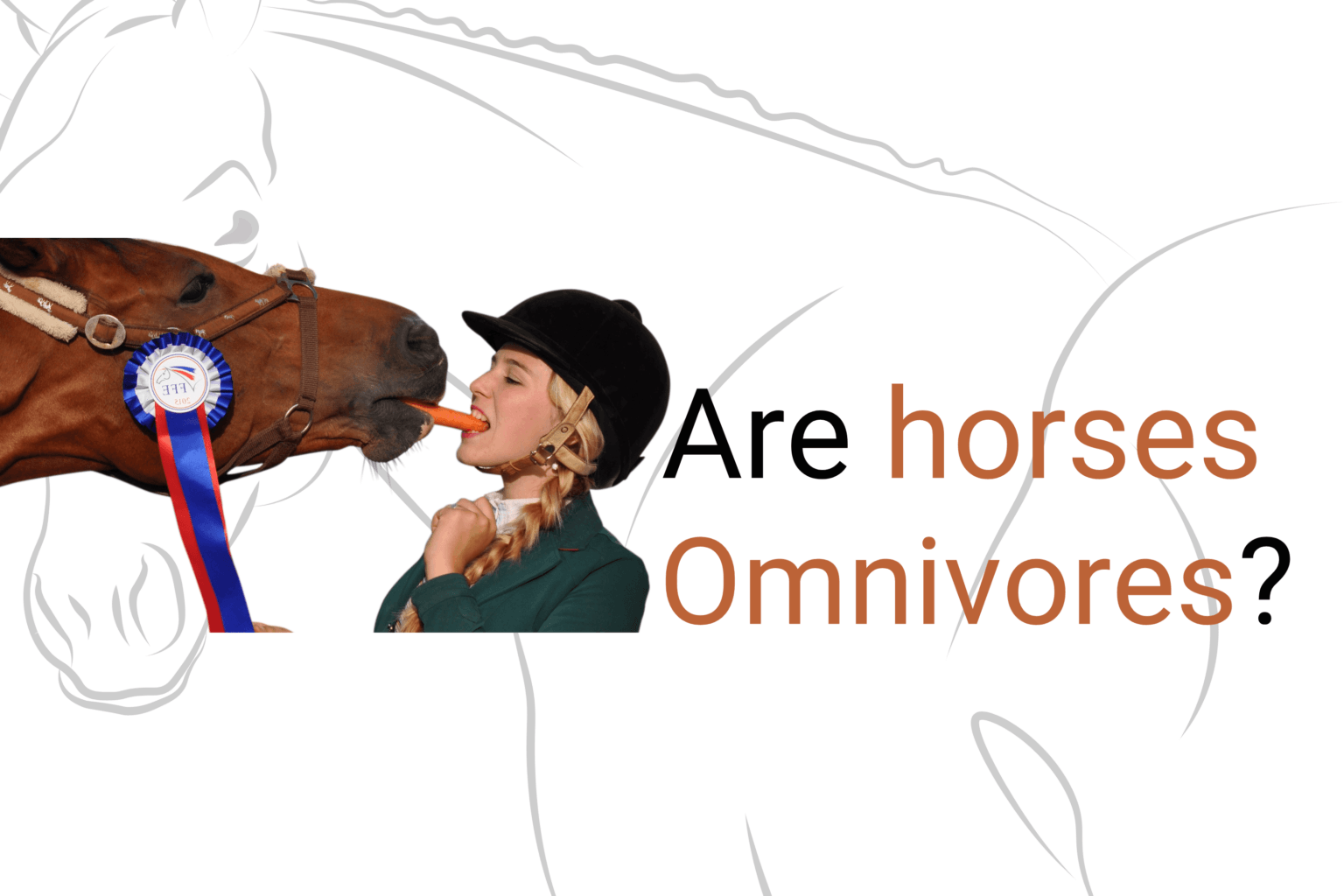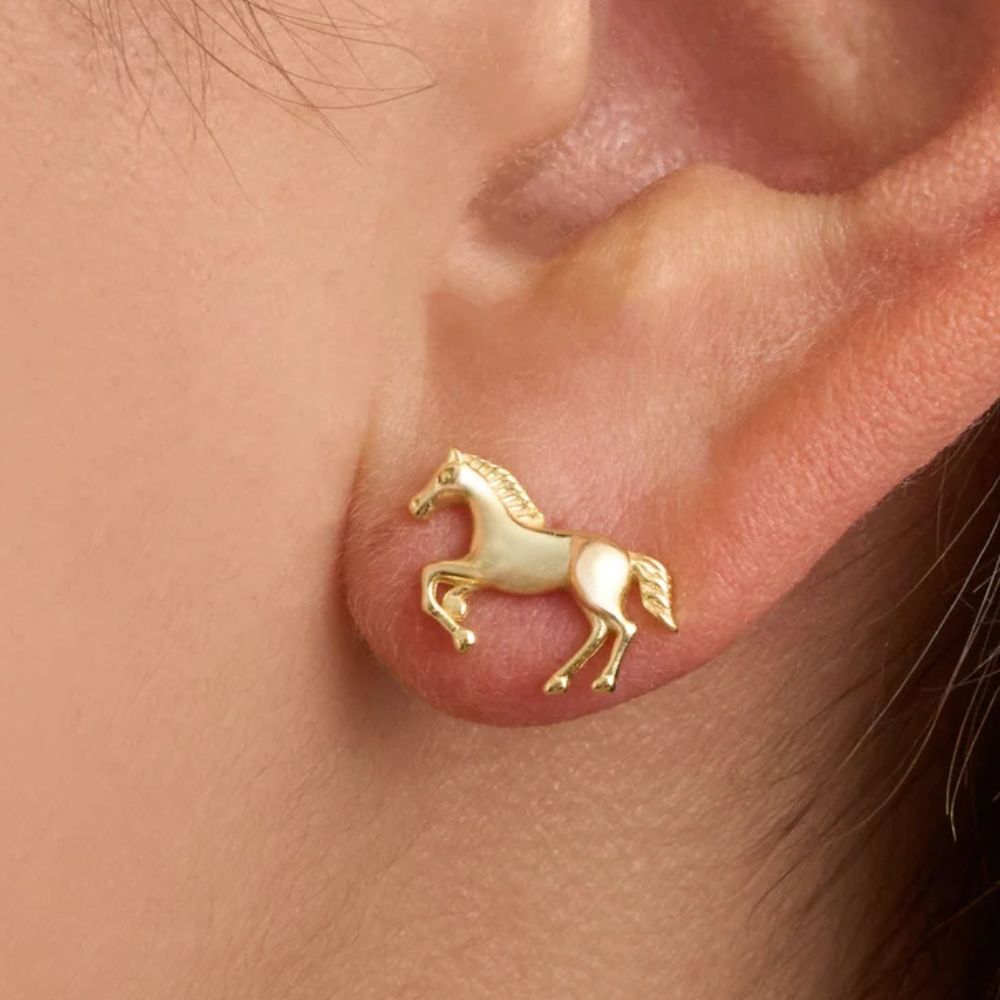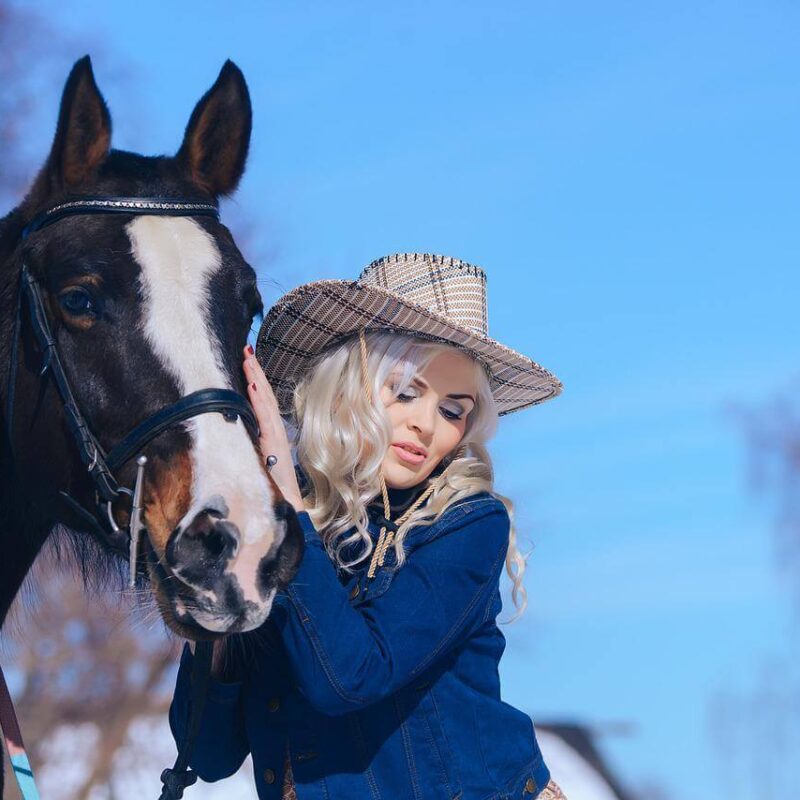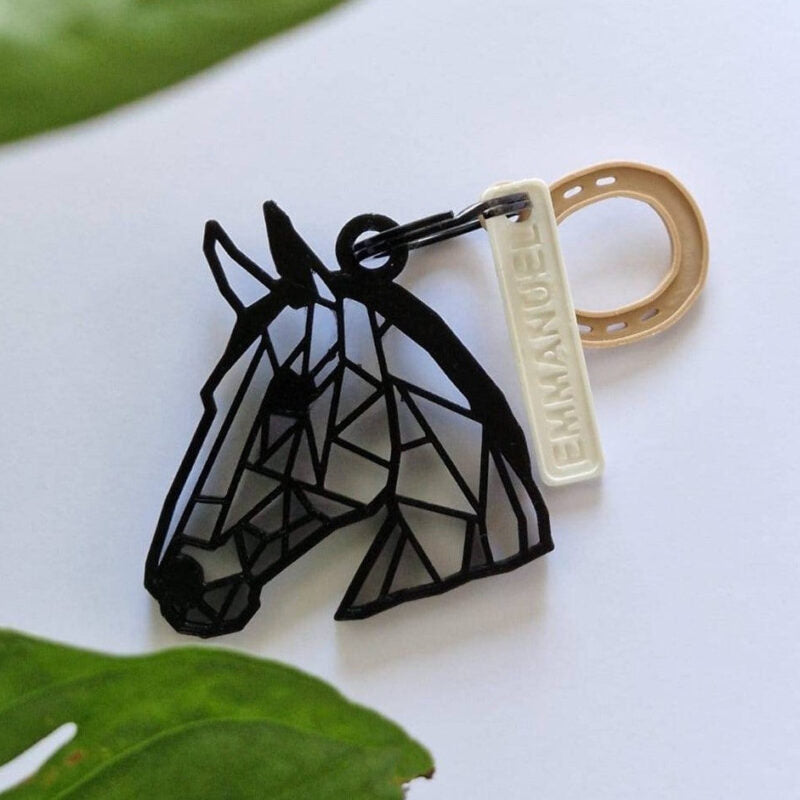
Unveiling the Truth: Are Horses Omnivores?
Horses have always been known as herbivores, consuming primarily plant-based diets. However, questions often arise about their eating habits, with some wondering if horses could potentially be omnivores or even carnivores. In this article, we will delve into the world of equine diet and explore the truth behind the popular query: “Are horses omnivores?“
Chapter 1: Where Can You Find a Wild Horse?
In the vast expanses of the world, wild horses can be found in various regions, each with its own distinct population and characteristics. These feral equines have managed to adapt and survive in diverse environments, showcasing their remarkable resilience and ability to thrive in the wild.
The American West: Home to Iconic Mustangs
One of the most well-known habitats of wild horses is the American West. The vast landscapes of Nevada, Wyoming, Montana, and other western states provide the perfect backdrop for the iconic mustangs. Descendants of domesticated horses brought to the New World by Spanish explorers, these wild horses have roamed the prairies, deserts, and mountainous regions for centuries. Today, they symbolize the untamed spirit of the American frontier.
➤ Also Read: Decoding Equine Intelligence: How Smart are Horses, Really?
The Steppes of Mongolia: Przewalski’s Horses
Travel across the vast steppes of Mongolia, and you may encounter Przewalski’s horses, a critically endangered species considered the last truly wild horse. These hardy creatures have thrived in the harsh climates of Central Asia for thousands of years. Przewalski’s horses exhibit unique physical characteristics, such as a stocky build, erect mane, and a strong adaptation to survive on sparse vegetation and extreme weather conditions.
The Australian Outback: Brumbies Roaming Free
In the rugged landscapes of the Australian Outback, another population of wild horses known as brumbies can be found. Descendants of horses brought to Australia during colonization, these resilient equines have adapted to the arid environments and vast grasslands of the continent. Brumbies evoke a sense of freedom and have become an integral part of Australia’s cultural heritage.
Other Regions and Populations
Apart from the American West, Mongolia, and Australia, wild horses can also be found in other parts of the world. These include the Camargue horses in the marshes of Southern France, the Chincoteague ponies inhabiting the barrier islands of Virginia and Maryland, and the Namib Desert horses in southwestern Africa. Each population has developed unique traits and behaviors influenced by their specific habitats and environmental challenges.
Conservation Efforts and Preservation
While wild horses continue to captivate our imagination and symbolize the untamed spirit of nature, they face numerous challenges in the modern world. Habitat loss, competition with livestock, and conflicts with human activities pose significant threats to their survival. To protect these magnificent creatures, conservation organizations, governmental bodies, and local communities collaborate on efforts such as establishing protected areas, implementing management plans, and promoting responsible tourism that respects their natural habitats.
By understanding where wild horses can be found and appreciating the diverse regions they call home, we can develop a deeper respect for their place in the natural world. These majestic equines remind us of the untamed beauty that still exists in remote corners of the globe and the importance of preserving their habitats for future generations to cherish.
Chapter 2: Horses Are Omnivores: Fact or Fiction?
The notion of horses being omnivores has been a topic of speculation and debate. In this chapter, we will delve into the scientific evidence and examine the unique characteristics of horses’ digestive systems to determine whether they are truly omnivores or if this idea is nothing more than a misconception.
The Herbivorous Digestive System
To understand horses’ dietary preferences, we must first explore their digestive system, which is characteristic of herbivores. Horses possess an extensive gastrointestinal tract specifically adapted to process plant material efficiently. Their long, complex intestines and cecum enable them to extract nutrients from fibrous plant matter, such as grasses and hay.
Teeth and Chewing Mechanism
The teeth of horses further emphasize their herbivorous nature. They have a set of large, flat molars designed for grinding plant material, while their incisors are used for cropping and biting off vegetation. Unlike the sharp, pointed teeth of carnivores, horses’ teeth are optimized for masticating fibrous plant matter.
Saliva and Digestive Enzymes
Horses’ saliva also plays a crucial role in their digestion. Saliva contains enzymes, such as amylase, which helps break down carbohydrates present in plant material. The production of saliva is continuous, ensuring proper lubrication during chewing and facilitating the breakdown of food in the digestive process.
Nutritional Requirements
Horses have specific nutritional requirements that are met through a herbivorous diet. Their primary sources of nutrition come from forage, such as grasses and hay, which provide essential nutrients like fiber, carbohydrates, proteins, vitamins, and minerals. Their digestive system is highly efficient at extracting nutrients from plant material, allowing horses to meet their dietary needs.
Occasional Curiosity and Dietary Exploration
While horses are predominantly herbivores, it is not uncommon to observe occasional curiosity towards non-plant substances. This behavior, known as “pica,” may lead horses to explore or even consume small amounts of non-nutritive items like soil, wood, or other objects. However, such behaviors are considered atypical and do not indicate a true omnivorous nature.
The Myth of Carnivorous Tendencies
The notion of horses being omnivores or having carnivorous tendencies is largely based on anecdotal observations of horses occasionally exhibiting curiosity towards meat or animal products. However, these isolated incidents do not reflect their natural dietary preferences or physiological adaptations. Horses lack the physical attributes, such as sharp teeth, short intestines, and specialized enzymes, that are typically found in true omnivorous or carnivorous animals.
The Importance of a Balanced Herbivorous Diet
Understanding horses’ herbivorous nature is crucial for their health and well-being. Feeding horses a balanced diet that consists primarily of high-quality forage, supplemented with suitable grains if necessary, ensures they receive the necessary nutrients for optimal performance and overall health. Deviating from their herbivorous diet can lead to digestive disorders, nutrient deficiencies, and other health complications.
By examining the scientific evidence and understanding the specialized adaptations of horses’ digestive systems, it becomes clear that they are indeed herbivores. While occasional curiosity towards non-plant substances may occur, it is important to provide horses with a diet that aligns with their natural herbivorous preferences. Embracing their herbivorous nature allows us to provide the best care for these magnificent creatures and maintain their overall health and vitality.
Add a touch of elegance to your style with our stunning horse-themed jewelry collection! Explore our exquisite Horse Jewelry and Equestrian Jewelry for timeless pieces that celebrate your love for horses. Find the perfect Horse Necklace to complement your look or elevate your accessories with a luxurious Gold Horse Pendant. For a unique touch, check out our Horseshoe Jewelry, or slip on a stunning Horse Ring or Horseshoe Ring. If you’re looking for something extra special, a Gold Horseshoe Ring will add a refined and meaningful touch. Find your perfect accessory today and showcase your equestrian spirit!
Chapter 3: Exploring the Reasons behind Horses’ Herbivorous Nature
The herbivorous nature of horses is deeply rooted in their evolutionary history and the unique adaptations of their anatomy and digestive system. In this chapter, we will delve into the reasons behind horses’ herbivorous nature, shedding light on the evolutionary factors that have shaped their dietary preferences.
3.1 Evolutionary Biology
Horses have evolved over millions of years, adapting to various environmental conditions and dietary resources. Their ancestors, known as eohippus, were small, forest-dwelling mammals that subsisted on a mixed diet of plants and insects. However, as horses evolved and expanded into different habitats, their diet gradually shifted towards a specialization in consuming plant material.
3.2 Anatomy and Dentition
The anatomy of horses provides valuable insights into their herbivorous nature. Their long, mobile lips allow for selective grazing and efficient ingestion of plant matter. The presence of a dental pad in their upper jaw, along with the lack of upper incisors, further facilitates the grazing process. The large and flat molars in their lower jaw aid in grinding fibrous vegetation.
3.3 Gastrointestinal Tract
One of the defining features of horses’ herbivorous nature lies in their gastrointestinal tract. Horses possess a specialized digestive system designed to extract nutrients from plant material. Their long intestines provide ample space for the breakdown and fermentation of cellulose, a complex carbohydrate found in plants. The cecum, a large pouch in the digestive tract, houses microbial populations that aid in the digestion of fiber and the production of volatile fatty acids.
3.4 Microbial Fermentation
Microbes play a vital role in horses’ ability to digest plant material. They reside in the cecum and colon, breaking down complex carbohydrates and cellulose that horses themselves cannot digest. Through microbial fermentation, horses can extract energy from fibrous plant matter, which forms a significant portion of their diet.
3.5 Adaptation to Grazing
The ability to graze is another key aspect of horses’ herbivorous nature. Their elongated necks and limbs are adapted for grazing on grasses and other low-lying vegetation. Grazing allows horses to consume small, frequent meals throughout the day, which aligns with their digestive system’s capacity to process fibrous plant material.
3.6 Dietary Requirements and Ecosystem Role
Horses have evolved to thrive on a herbivorous diet due to their specific nutritional requirements. Their dietary needs include an adequate intake of fiber, carbohydrates, proteins, vitamins, and minerals found in plant material. Furthermore, horses, as herbivores, play an important role in the ecosystem as seed dispersers. Their grazing behaviors contribute to the maintenance of grasslands and the dispersal of plant seeds across vast areas.
3.7 The Benefits of Herbivorous Diets
A herbivorous diet offers several benefits for horses. High-fiber plant material promotes healthy digestion, preventing digestive disorders such as colic and gastric ulcers. The slow and steady release of energy from plant-based diets helps maintain consistent energy levels and supports the overall well-being of horses.
Add a touch of elegance to your style with our stunning horse-themed jewelry collection! Explore our exquisite Horse Jewelry and Equestrian Jewelry for timeless pieces that celebrate your love for horses. Find the perfect Horse Necklace to complement your look or elevate your accessories with a luxurious Gold Horse Pendant. For a unique touch, check out our Horseshoe Jewelry, or slip on a stunning Horse Ring or Horseshoe Ring. If you’re looking for something extra special, a Gold Horseshoe Ring will add a refined and meaningful touch. Find your perfect accessory today and showcase your equestrian spirit!
Chapter 4: What If Horses Were Carnivores?
The idea of horses as carnivores may seem intriguing and even fantastical. In this chapter, we will explore the hypothetical scenario of horses being carnivorous and examine the potential implications on their behavior, anatomy, and ecological relationships.
4.1 Hypothetical Considerations
Imagining horses as carnivores requires us to suspend our understanding of their current herbivorous nature and envision a scenario where their evolutionary trajectory took a different path. This hypothetical exploration allows us to appreciate the unique adaptations and ecological roles of horses as they exist today.
4.2 Adaptations for a Carnivorous Diet
If horses were carnivorous, their anatomy would have undergone significant changes to accommodate the consumption of animal-based prey. They would likely possess sharp, pointed teeth designed for tearing flesh, as well as strong jaws and neck muscles to subdue and consume their prey. Their digestive system would differ considerably, featuring shorter intestines optimized for processing animal proteins.
4.3 Impact on Behavior and Lifestyle
A shift to a carnivorous diet would have profound implications for horses’ behavior and lifestyle. Their feeding patterns would involve hunting and capturing prey, leading to changes in social structures and behaviors. Horses might exhibit increased aggression and territoriality as they compete for hunting grounds and food resources. The grazing behaviors we associate with herbivorous horses would be replaced by stalking, chasing, and capturing prey.
4.4 Ecological Consequences
The transformation of horses into carnivores would have far-reaching ecological consequences. Their position in the food chain would change, potentially disrupting existing predator-prey relationships. The populations of their prey species, such as small mammals or birds, would experience increased predation pressure. Additionally, the absence of herbivorous grazers like horses could disrupt the balance of ecosystems, impacting vegetation dynamics and altering the composition of plant communities.
4.5 Challenges and Limitations
While imagining horses as carnivores allows us to explore alternate possibilities, it is important to recognize the challenges and limitations they would face in such a scenario. Horses’ evolutionary history and existing adaptations are finely tuned for herbivorous lifestyles. The absence of specialized anatomical features, such as sharp teeth and shorter intestines, would hinder their ability to effectively consume and digest animal-based prey. These limitations would likely limit their success as carnivores.
4.6 Appreciating Horses as Herbivores
The hypothetical exploration of horses as carnivores serves as a reminder of the unique adaptations and ecological roles they possess as herbivores. Their grazing behaviors contribute to the maintenance of grasslands, seed dispersal, and the intricate balance of ecosystems. Understanding and appreciating their herbivorous nature allows us to better comprehend their evolutionary history, care for their nutritional needs, and foster their well-being as the magnificent creatures they are.
Chapter 5: Why Are Horses Herbivores?
The herbivorous nature of horses is not a mere coincidence; it is the result of millions of years of evolution and specialized adaptations. In this chapter, we will explore the reasons behind horses’ herbivorous diet and uncover the factors that have shaped their unique feeding preferences.
5.1 Evolutionary History
Throughout their evolutionary history, horses have undergone remarkable transformations in response to changing environments and available food sources. From their early ancestors, who roamed dense forests and fed on a mixed diet of plants and insects, horses gradually transitioned to a predominantly herbivorous lifestyle. This transition was driven by the need to adapt to the expanding grasslands and their rich vegetation.
5.2 Anatomical Adaptations
The anatomy of horses provides clear evidence of their herbivorous nature. Their elongated heads and necks, combined with mobile lips and a well-developed tongue, allow for efficient grazing and selective feeding on vegetation. Horses’ teeth are designed for grinding fibrous plant material, with large molars and premolars that aid in the breakdown of tough plant fibers.
5.3 Specialized Digestive System
One of the key factors that solidify horses’ herbivorous status is their specialized digestive system. Horses possess a large cecum, a fermentation chamber where fibrous plant material is broken down by microbial activity. The cecum allows horses to extract nutrients from cellulose, a complex carbohydrate found in plants, through the process of microbial fermentation. Their long intestines provide ample time for the breakdown and absorption of nutrients from plant matter.
5.4 Energy Requirements and Foraging Efficiency
Horses’ herbivorous diet aligns with their energy requirements and foraging efficiency. Plant material, particularly grasses and hay, provides the necessary carbohydrates and fiber for sustained energy production. Grazing allows horses to consume small, frequent meals throughout the day, promoting efficient digestion and nutrient absorption.
5.5 Nutritional Balance
Herbivorous diets provide horses with the essential nutrients required for their growth, development, and overall well-being. Plants offer a wide array of vitamins, minerals, and phytonutrients that support various bodily functions. The fibrous nature of plant material aids in maintaining healthy digestion, preventing issues such as colic and gastric ulcers.
5.6 Ecological Role and Adaptation
Horses’ herbivorous nature is not only beneficial to their own survival but also plays a vital ecological role. As grazers, horses shape and maintain grasslands by controlling vegetation growth and promoting biodiversity. Their feeding behaviors contribute to seed dispersal, aiding in the spread and establishment of plant species across different habitats.
5.7 Conservation and Responsible Management
Understanding why horses are herbivores is crucial for their conservation and responsible management. Providing horses with appropriate nutrition, including access to high-quality forage and suitable supplements, ensures their health and well-being. Conservation efforts should focus on protecting their natural habitats and preserving the delicate balance of ecosystems where horses play an important ecological role.
Frequently Asked Questions:
- Can horses be omnivores? No, horses are herbivores by nature, with a digestive system specifically designed for plant material.
- What if a horse accidentally consumes meat? While it’s uncommon for horses to deliberately consume meat, accidental ingestion usually doesn’t pose significant health risks. However, it’s important to monitor their behavior and consult a veterinarian if any concerns arise.
- Are there any horse breeds that exhibit omnivorous tendencies? No, all horse breeds share the same herbivorous nature, regardless of their size, appearance, or geographic origin.
- Do horses have any natural inclinations towards carnivorous behavior? Horses may occasionally exhibit curiosity towards non-plant substances, but this doesn’t indicate a genuine carnivorous inclination. Their diet should primarily consist of high-quality forage and suitable grains, if necessary.
- How should horse owners ensure their horses maintain a balanced herbivorous diet? Horse owners should provide ample access to fresh water, quality forage, and, if required, a nutritionally balanced concentrate feed. Regular check-ups with a veterinarian and consultations with equine nutritionists are also crucial for maintaining a horse’s overall health and well-being.
Conclusion:
In conclusion, horses are unequivocally herbivores, possessing specialized digestive systems designed to process plant material efficiently. While they may occasionally display curiosity towards non-plant substances, this behavior does not make them omnivorous. Understanding horses’ dietary preferences is essential for their health and care, enabling owners to provide them with the appropriate nutrition they need to thrive. By debunking the myth of horses as omnivores, we can ensure their well-being and continue to appreciate their magnificence as the herbivorous beings they truly are.






















